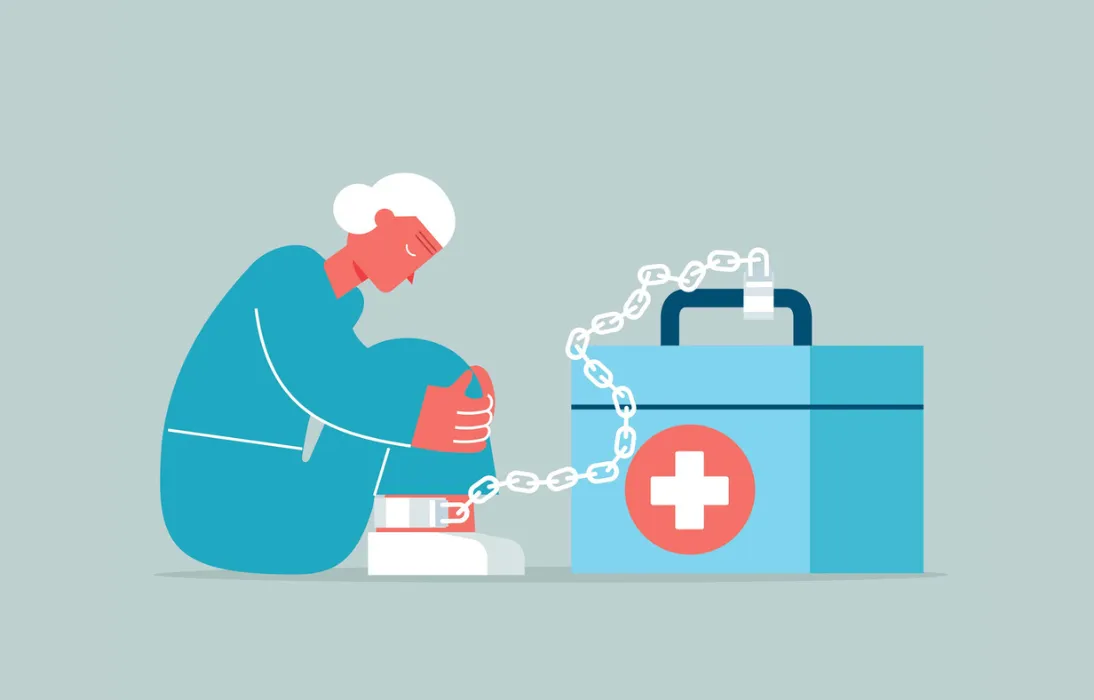4 Ways Clinicians Can Address the Non-Physical Side Effects of Serious Illness

Serious illness is costly. It saps a person’s health certainly, but also takes their money and time. The more clinicians address this, the healthier patients will be.
This blog post will explore the non-physical side effects of serious illness—how costly and time-consuming it is, for example—and how clinicians can better serve their patients by acknowledging these side effects and “treating” them. This novel approach does require a shift in practice. Clinicians will need to augment the traditional diagnose-and-treat mindset that focuses on lab results and clinical trials to consider how far their patients must travel for appointments and whether their families can support them financially, logistically, or even emotionally through it all.
Social Determinants of Health
To start a discussion around the non-physical side effects of serious illness, one must step back and consider social determinants of health (SDOH). Thankfully, SDOH are coming to be better and better understood. From one perspective, SDOH can be defined as everything that happens outside the exam room, such as where a person lives, how much money they make, their education status, and their support system.
It’s clear that SDOH impact a person’s health, far more than we used to think. Even the distance of a few subway stops in Boston can make a difference in the community rates of diabetes and premature death.
In fact, for the first time, the Centers for Medicare and Medicaid Services (CMS) are incorporating SDOH into the 2024 fee schedule. Clinicians will now be able to bill for time spent with patients discussing ways to afford healthier food or find stable housing, for example.
With an SDOH lens, clinicians can take it a step further to see that not only does a patient’s life outside the exam room impact their health, but their treatment inside the exam room impacts the rest of their life.
"[...] not only does a patient’s life outside the exam room impact their health, but their treatment inside the exam room impacts the rest of their life."
Financial Toxicity
For starters, let’s consider the cost of treatment. Treatment for serious illness is expensive.
And an honest price tag often isn’t even available. Few patients know what their treatment will cost before getting it. Second, good health insurance is expensive, sometimes unattainably so. But then, having insurance doesn’t even insulate a person from paying out of pocket for their care. Copays, deductibles, coinsurance, prescriptions—there is always a bill in the mailbox.
In fact, a Kaiser Family Foundation survey found that over 40 percent of American adults have some kind of medical debt. Many can’t afford to pay these debts off and some hospitals are suing them over it.
Time Toxicity
Perhaps a more hidden cost of serious illness is the loss of time, both literally and figuratively. “Time toxicity” is a newer concept that captures the amount of time an illness will cost a patient. Every appointment is time spent in transit, in waiting, in recovery.
"Time toxicity isn’t equitable either; some patients might not be able to afford the time lost."
Time toxicity isn’t equitable either; some patients might not be able to afford the time lost. They may not have a job with flexible time off, or paid time off. They may not have friends and family who can drive them to and from appointments, drives that can add up, especially for rural patients.
After receiving treatment, patients still have hours of work to do to ensure their care is paid for. The administrative burden of health insurance is significant; it’s complicated and nearly impossible to find someone who can explain it. This is, of course, compounded by low rates of financial and health insurance literacy.
But beyond the time spent on treatment and health insurance, people living with serious illness lose metaphorical time. They’re left with minimal energy, challenging side effects, and restrictive schedules. With their days dictated for them, their existence can begin to feel completely wrapped up in their disease rather than life’s regular milestones.
The loss of time is coupled with a loss of independence. A person may feel like they have little control. They don’t get to decide where they live or if they can travel because they are tethered to a radiation or dialysis schedule.
In other words, serious illness has serious side effects, both physical and non-physical. While these concepts or discussions may be novel, the impact of serious illness on a patient’s life is not.
"In other words, serious illness has serious side effects, both physical and non-physical. While these concepts or discussions may be novel, the impact of serious illness on a patient’s life is not."
What Clinicians Should Do
While acknowledging these non-physical side effects of treatment is the first step, the next is doing something about them. All the side effects listed above are why palliative care is so important. Palliative care focuses on quality of life and relieving both symptoms and stress related to serious illness. These kinds of discussions are the perfect entry point for clinicians to talk about non-physical side effects. Below are a few action steps for clinicians to do this well.
Actually talk about it.
The biggest step forward is to simply talk with the patient about all the non-physical ways their illness and treatment will impact their life. A patient may be wary about bringing up their medical debt or the struggle to find healthy, safe housing, so as not to use up precious minutes with their clinician. So, the onus is on the clinician to start that conversation.
Be honest and specific.
When discussing the differences between Treatment Plans A and B, be honest about all the side effects—physical and non-physical. Be clear about tradeoffs. Maybe Plan A will have less harsh physical side effects, but it will require the patient to drive to the hospital’s downtown campus rather than the local outpatient clinic. Maybe Plan B will require appointments four times a week, but it’ll be half the cost of Plan A.
Include the patient in decision-making.
After laying out the facts, allow the patient to decide which tradeoffs they’re willing to make, and which treatment plan they want to pursue.
Utilize the new fee schedule.
It might seem counterintuitive to encourage billing for these discussions, but doing so will raise awareness at the policy level. The more clinicians bill for SDOH-related conversations, the more policymakers and other clinicians will understand their importance.
Patients living with serious illness entrust their clinicians with more than their physical health; they entrust them with their livelihoods and their larger well-being. By ensuring that SDOH, and time and financial toxicity are part of the conversation in the exam room, clinicians will ensure their patients are happier and healthier at home.

Be the first to read articles from the field (and beyond), access new resources, and register for upcoming events.
SubscribeEdited by Melissa Baron. Clinical review by Andrew Esch, MD, MBA.
